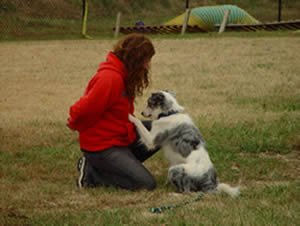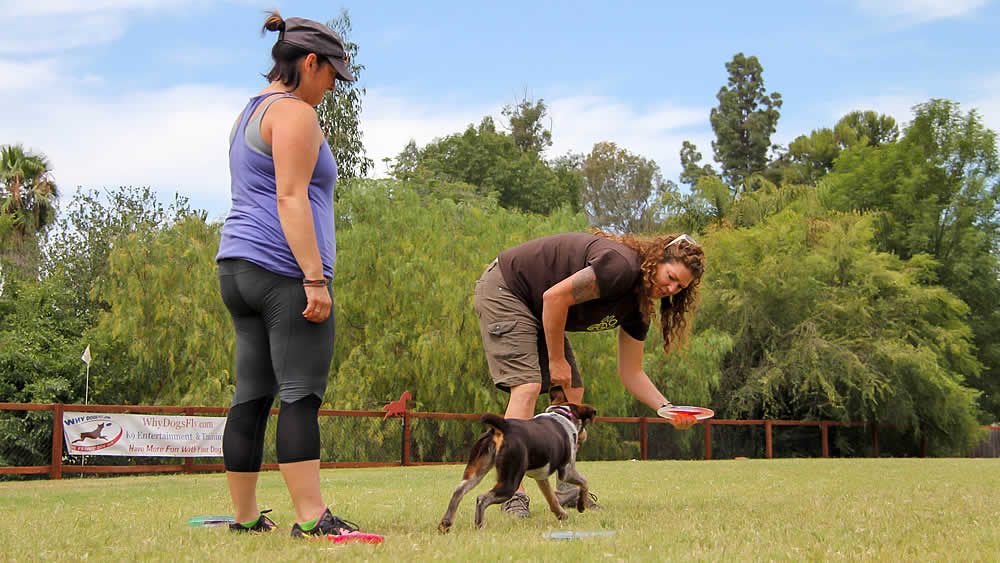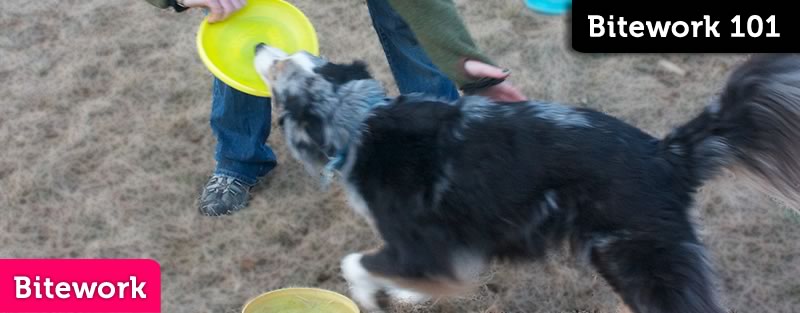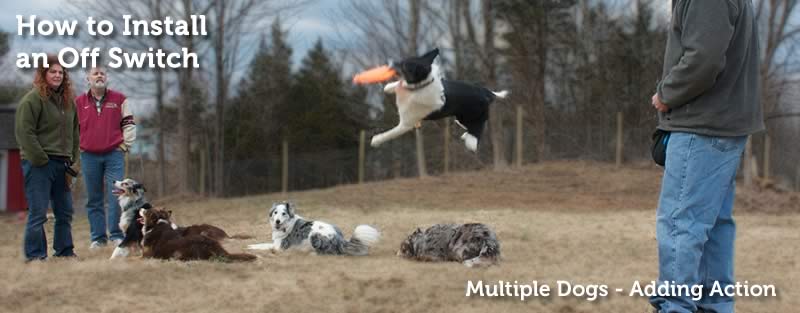
Adding an Action Distraction
Well, here we go, getting started on what we all want – dogs that will wait while another dog works.
Up until now, you’ve been providing a relatively low level distraction – a distraction dog working with the handler on fairly lame and low intensity activities.
You’re going to start to add some action by adding some more intense play with the Distraction Dog.
At this point in time it is important to note that you are still working the dogs that are on their spots and/or pedestals and the distraction dog is still getting shined on and is not really being worked. The object here is to get your dogs some experience staying while another dog is playing/working.
Choose an Appropriate Toy
You need to ensure that you keep the distraction from the active distraction dog under the Working Dog’s threshold. If your Working Dog thinks a Frisbee is the most awesome thing on the planet, then you probably shouldn’t play with a Frisbee with the Distraction Dog. If your dog is a Ball Junkie, we don’t want to break out a tennis ball… yet.
A bone perhaps? A rope toy? Something that will be challenging, but not be too challenging, for your Working Dogs to resist.
Short Sessions
You want to keep your sessions very short. 30 seconds to a minute ought to be fine at first. Again, the key here is success. You are not testing the Working Dog’s ability to stay, you are teaching the Working Dog to stay. Because you know that the Working Dog will fail in a new situation or environment, you’re going to prove to that Working Dog that staying on task is going to pay off.
Switch Dogs
After your 30 second session you’ll want to switch dogs. Get the distraction dog on the Spot and stable, then release the Working Dog. As you release the previous Working Dog, it’s probably a good idea to pay the dog that was just placed on the spot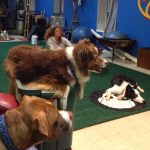 Spot is a “go to a place”, or “go to a mat” behavior. This means that the dog seeks out and performs a duration behavior on a spot of the handler’s choosing. A... More.
Spot is a “go to a place”, or “go to a mat” behavior. This means that the dog seeks out and performs a duration behavior on a spot of the handler’s choosing. A... More.
Repeat
Once you get several successful reps of this with each dog you can start to up the ante by increasing the amount of time the Working Dog(s) are going to be staying on their spot. Again, what’s most important is that the Working Dogs are successful and that means that you are releasing them from their Spots and/or Pedestals early and often.




